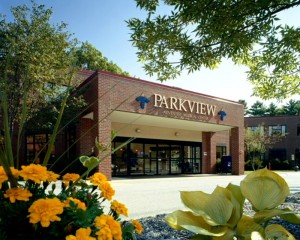Parkview is Leading the Way with its Electronic Medical Records (EMR)Program
President Barack Obama has a clear vision of what he foresees as the future of health care in the United States. And, in 2009, with the creation of the U.S. American Recovery and Reinvestment Act, the President set the bar high setting in motion a lofty goal: every hospital and doctor’s office in America must computerize its medical information, creating a nationwide electronic medical record system (EMR). Every patient’s records, files, data must be transferred from paper to integrated technology (IT) via an electronic database. The goal is to save billions of dollars and thousands of lives that are lost each year to waste and mistakes. And the President backed his verbal pledge with a $787 billion federal stimulus package promise.
 The money is aimed at stimulating interest and action. Hospitals and doctors that adhere to the President’s goal using IT to fix system problems will be rewarded with stimulus money. They will be given access to the $50 billion kitty over the next five years, starting with $19 billion which will be available to cooperating entities in 2011. What’s more, medical groups and hospitals that lag behind and don’t install effective IT will face stiff punishment: starting in 2015, they will see a 1 percent cut in Medicare payouts and the punishment grows to 3 percent come 2017.
The money is aimed at stimulating interest and action. Hospitals and doctors that adhere to the President’s goal using IT to fix system problems will be rewarded with stimulus money. They will be given access to the $50 billion kitty over the next five years, starting with $19 billion which will be available to cooperating entities in 2011. What’s more, medical groups and hospitals that lag behind and don’t install effective IT will face stiff punishment: starting in 2015, they will see a 1 percent cut in Medicare payouts and the punishment grows to 3 percent come 2017.
Leading the way toward achieving the President’s vision here in Maine? Parkview Adventist Medical Center. The 55-bed acute care facility in Brunswick, which didn’t even have e-mail a decade ago, is grabbing national and global headlines with its IT division. The department’s forward thinking, no-nonsense approach has garnered major awards and attention and has put the Maine Street hospital in line for receiving $700,000 in stimulus funds for implementing an EMR in the practices of its affiliated physicians. “The hospital is pretty much paperless”, says Bill McQuaid, CIO and Assistant VP at Parkview. Nurses are communicating and documenting patient information electronically, doctors are using computerized physician order entry, and pharmacy, radiology and labs are all electronic.
“Through advanced clinical committees, Parkview updates and improves clinical applications to provide better functionality for users and enhanced care for patients,” McQuaid proffers. “This evidence-based medicine wouldn’t be possible without integrating its computerized systems to analyze the data, which in the end, could wind up saving Parkview (and its patients) millions.”
“One of the biggest challenges I had was trying to get all these different things to talk together,” McQuaid said. So, Parkview turned its attention to finding a vendor that could bring the whole system together electronically. They found their match in the company Meditech. “We picked them because they were truly one of the few vendors out there that had a solution for every aspect of the hospital.”
 McQuaid appreciated Meditech’s approach: they offered the same product to hospitals of all sizes. “The product they offered me as a 55-bed hospital is the same as a 1,000-bed hospital. I don’t want reduced functionality. What you have to build is no different if you’re two beds or a thousand beds.” And McQuaid and his team, a six-person IT department, are now achieving even greater success: sharing data with other facilities, including physician practices in the Brunswick area, larger hospitals and Maine’s Regional Information Exchange for EMR’s. “We are leading the way and couldn’t be happier with how smoothly our system is working,” McQuaid admits. “Yes, we are ahead of the pack. And, yes, we plan to continue to be in the lead.”
McQuaid appreciated Meditech’s approach: they offered the same product to hospitals of all sizes. “The product they offered me as a 55-bed hospital is the same as a 1,000-bed hospital. I don’t want reduced functionality. What you have to build is no different if you’re two beds or a thousand beds.” And McQuaid and his team, a six-person IT department, are now achieving even greater success: sharing data with other facilities, including physician practices in the Brunswick area, larger hospitals and Maine’s Regional Information Exchange for EMR’s. “We are leading the way and couldn’t be happier with how smoothly our system is working,” McQuaid admits. “Yes, we are ahead of the pack. And, yes, we plan to continue to be in the lead.”